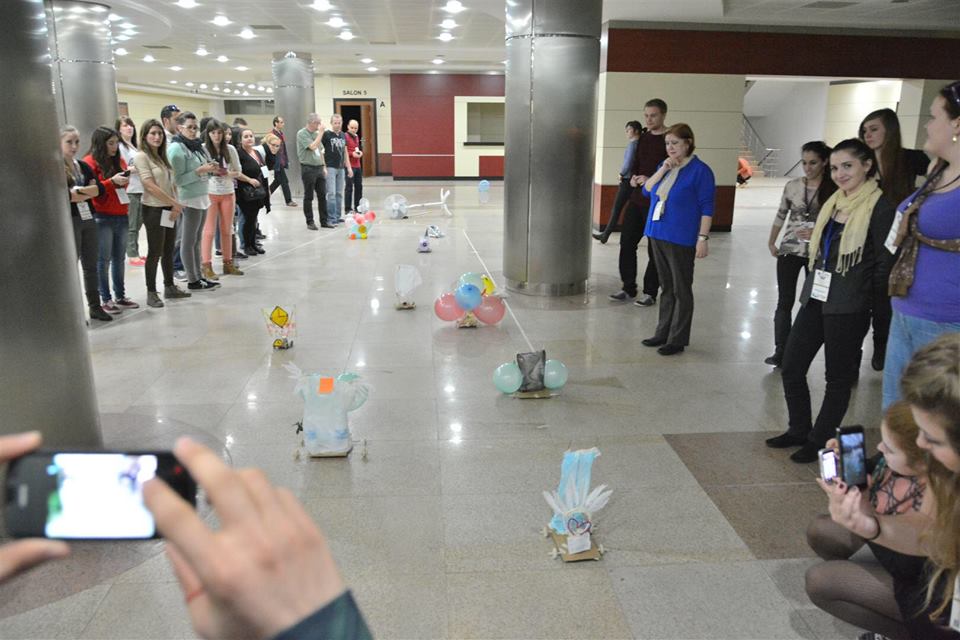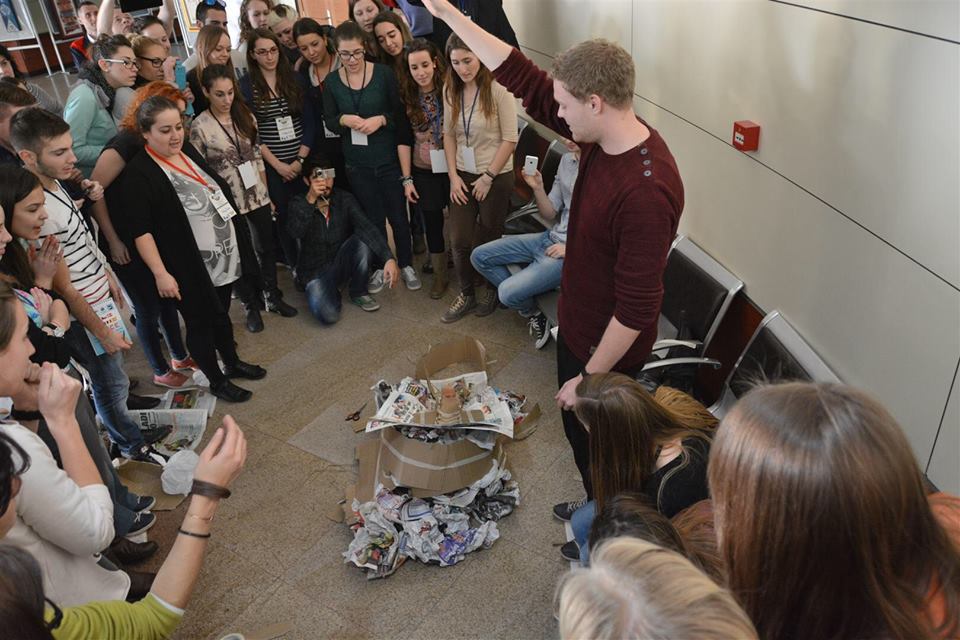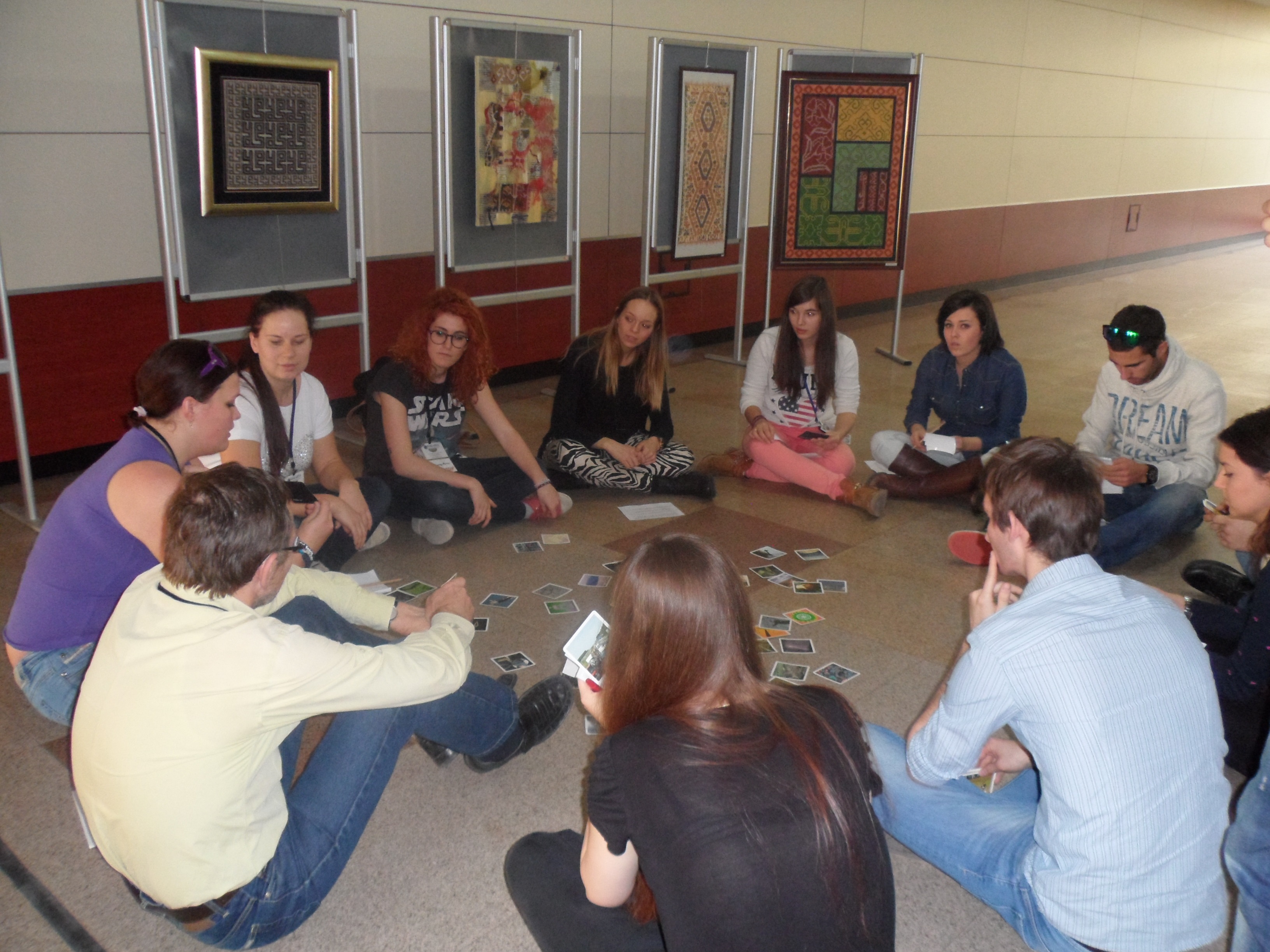The second day of the Project started with lecture from Portugal about “The Progression Model for Entrepreneurship Education in Initial Teacher Education”. In the context of this lecture, the participants were informed about the progression model. Some clues and information were given about entrepreneurship for teacher education. After making country groups, creativity was embodied through a pyramid game. The participants were asked to form a pyramid with 10 coins at the first step. Then, they were expected to change the direction of the pyramid by the help of only 3 coins. After many trials, all the groups achieved the goal.
After the lecture by Portugal, the next lecture was conducted by Denmark about “Art, Innovation and Creativity in Teacher Education”. In the context of this lecture, the meanings and the steps for the establishing these terms were defined. The participants were provided to sight the creativity applications with the chance of the examples in their education system. After defining the terms, a presentation on “inventions that benefits mankind” was held by the Danish students. This presentation made the participants question the inventions coming from the beginning of the civilizations in terms of the progression of creativity, innovation and entrepreneurship.
Following the lectures, a workshop of three parts was carried out by the Danish group.
The aim of the workshop was to give the participants chance to put into practice the theoretical information they had through the lectures. The participants were devided in groups of 5 and the workshop included 3 steps.
In the first step, the students in the groups were asked to choose two picturecards (Dialoogle) which identify their personality best. Then the groupmembers had to explain why they did choose those cards.
In the second step, “the egg”-assignment was carried out . In the context of this excersice, the groups were supposed to create a mechanism to protect the egg not to be broken when it is was released from the height of 2 meters. So, all the groups were free to choose the provided materials such as cardboards, scissors, old newspapers, strings, etc. After all the groups completed the task, the usability of the mechanisms was tested. The purpose of this task was to develop the group-cooperation and find creative solutions of the task and make improvements during the work.
In the third step, the groups task was to create a wind driven car through different kind of materials, such as wheels, plaques, duct tapes, masking tapes, balloons, tinfoil, staplers, utility knifes, plastic cups, metal wire, glue sticks, straws, etc. The students were asked to choose one picture-card that symbolizes the most important feature of the car. The groups had 1½ hour to design the car. The group should consider
How far does the car go?
Surprising elements on the car
The most extravagant and well-thought design
The group dynamic
The purpose of this third task was to get the group cooperate in construction of the wind-car and find creative solution. The wind-cars were tested during the construction-period and reconstructed for better solutions.



